Here at the cabin, rumours of spring are still buried arctic deep in the frozen ground.
I spy distant traces of the season to come: the rust-tipped tendrils of green moss backlit by the setting sun on forest trails; the first blades of exploratory growth in the native Seersucker sedges (Carex plantaginea); Marsh marigolds (Caltha palustris) shyly poking their heads above the muck in the wetlands.

A round of robins have returned to patrol the frosted meadow. A few brave wood ducks arrived to skate on our mostly frozen pond.
Last night though, a grim setback. A storm front of freezing rain swept through the countryside to glaze the forests in a sparkling coat of ice. Today, the west winds picked up to gale force intensity to blow the trees around like crazy chandeliers swinging and chattering in the wind.

Ominous indeed, but we seem to have survived the worst of it. Clearly, the joys of spring are on hold until further notice.
It will happen.
The return of Roy
Thankfully, there are bright spots of human warmth amidst the chill. I recently caught up with mid-western prairie whisperer and great garden friend, Roy Diblik who returned to Toronto in March to speak at two local botanical gardens.
It was heartwarming to see the grizzled plantsman again here on Canadian soil; our last meet-up was on his home ground at the Lurie in Chicago. This time around, we spent a long winter’s afternoon in a local TO café catching up on plants and friends, prairie-seeding strategies, his fascination with crown collision, and his plans for the next phase of his wildly accessible Know Maintenance™ approach to perennial planting.
Hint: There’s a new book and an app in the works to help people put it all together for themselves.
Here’s my well-thumbed copy of his Timber Press book below.
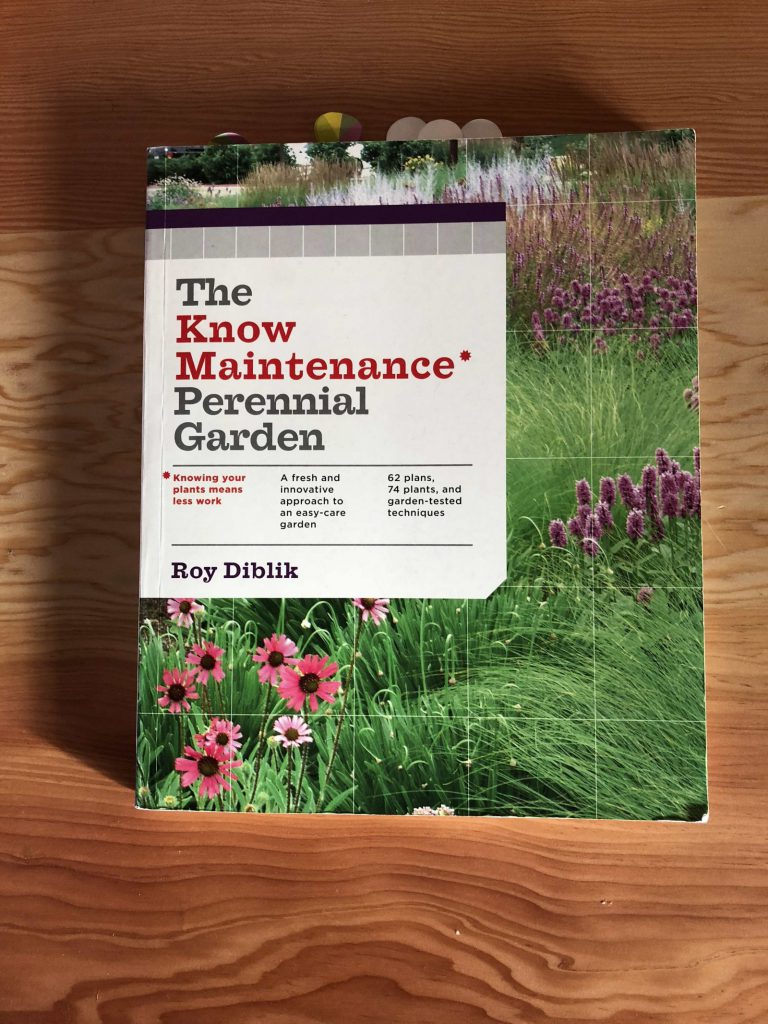
Roy suggests we can come to know plants in a much more personal and intimate way. Not as something to simply learn about, but more as the way we come to know a friend. His latest talk introduces sixteeen plants all highly worthy of a long-term relationship that can sprout, bud, and blossom, and in his case – even save your life.
His humility and sincerity are completely disarming. After nearly 35 years as a largely self-taught plantsman, he modestly claims to not know very much at all and maintains that plants are still teaching him about themselves.
Later that same evening before a capacity crowd at the TBG, Roy recounted his life-story and how he himself came to know and love plants. He points out that plants have been able to successfully form thriving communities for thousands of years with absolutely no need for human intervention.
On the flipside, a plant in a plastic pot is entirely dependent on you to put it in the ground and give it the start in life it needs.
Our challenge as gardeners is to do the latter while respecting the former.
Time for a new alphabet?
Roy’s message for gardeners and the green industry is quietly subversive. Do we really need the latest plants and cultivars when there are virtually limitless creative options available with the proven and dependable plants we already have?
It needs to be said: “Our industry has overwhelmed us with new things. And they want to keep this agreement reality going that the only way we’re going to get better as gardeners, is to buy new plants. It’s not the new plants you need, it’s the new you. It’s the strength and beauty you have within you to create and design gardens using ten, fifteen, twenty plants and you learn more as you come to know them more deeply.”
Roy likens our choice of plants to the alphabet. How many of us are discouraged because we only have 26 letters? Do we really need more letters? Have you given up on the letter ‘A’? Has ‘A’ been over-used?
It’s a message that resonates far beyond garden culture.
Indeed, when I hear Roy speak, he talks about plants, life, and and love almost interchangeably:
Is there one of you in the audience that would give up being held, give up being hugged? And yet we ask every plant we grow to never touch, to be separated and buried with three inches of wood each year – never letting you be intimate, never letting you be together.
The man is tapping into something deeper, where the idea of creating a community of plants seems like the most natural thing in the world.
In the Know Maintenance™ Workshop
After driving through a blizzard that snowed out all the highway signs, Roy woke up late the next day to present a sold-out morning workshop at the Royal Botanical Gardens in Burlington.
The first photo in his slideshow happened to be a close-up of the boreal forest floor, showing a community of sedges, plants, mosses and lichen knit together so tightly that no weed could ever break in.

Roy started talking about this image and it was like a portal to a different understanding of how plants live together and how we can learn from something nature figured out eons ago.
The quickest way to outsmart a weed is to cover the earth as quickly as you can.
That first slide of the forest floor stayed up for the better part of an hour – and not a single person seemed to notice, except me. It turns out that Roy’s gravel voice is all the slideshow you ever really need.
In the workshop, he encouraged us to stop and observe the growth habit and growth rate of the plants we use in our gardens. In his mind, it is the beginning of wisdom:
Start by understanding my growth habit, am I taller than I am wide? Am I wider than I am tall?
“So, when you appreciate the growth rate of a plant, from the time you put it into the ground to the 4-5 years till maturity and you appreciate the seasonal growth rate from when it’s first put in the ground in April. You ask: When does it reach its mature height? And that growth rate could be 6 weeks, 8 weeks, 10 weeks. And then you begin to relate those growth rates to each other, so those plants grow collectively, not putting their neighbours in peril.”
This relationship is the key to understanding his grid-based planting system with an example from his book shown below. Once you know the relative growth rates and habit for a few key perennials, grasses and sedges, you can figure out the percentages of how many to use in a given planting to create balance over the long-term and adjust as necessary as time goes by.
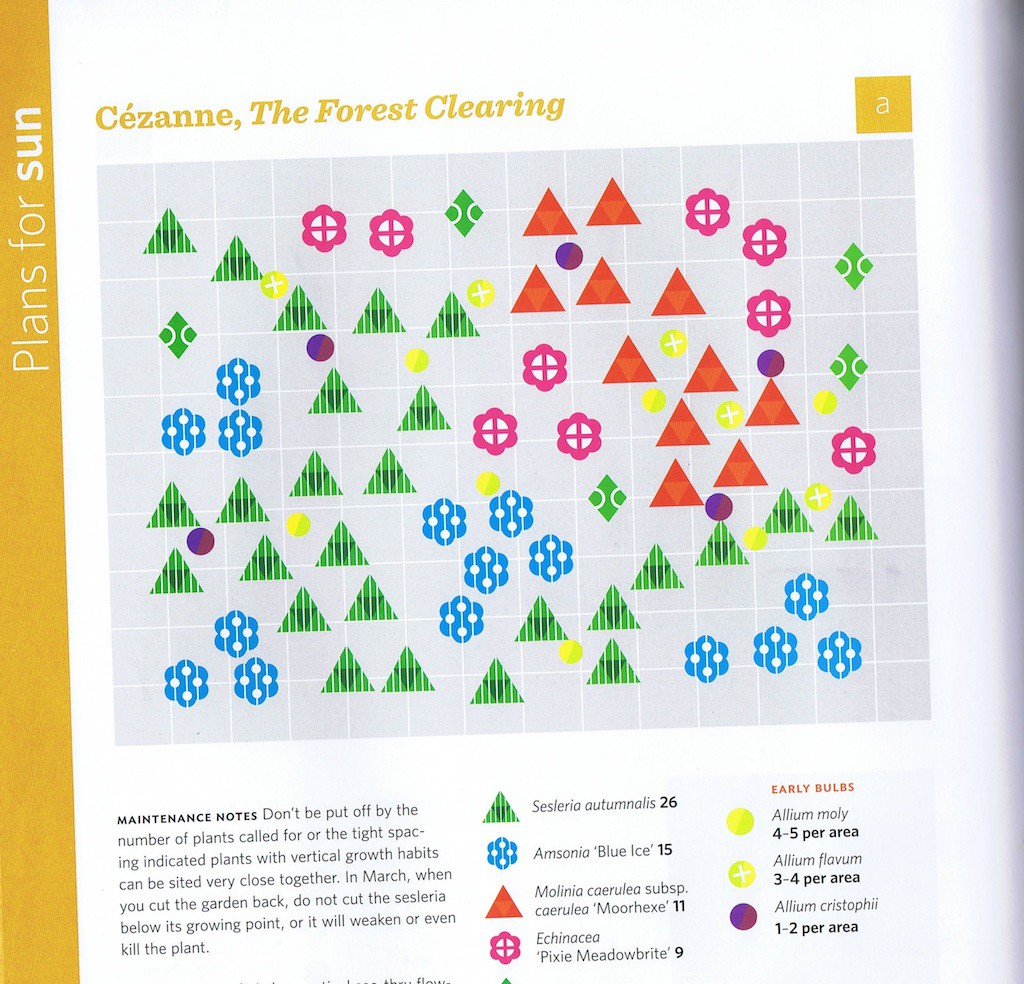
His long-term vision is to help us create self-sustainable plantings that can unfold in phases and take on a life of their own: “The plants are combined in social communities, so that one plant can grow into each other providing love and well-being for the plants as they mature. You’re minimizing the competitiveness by not putting thugs in that can overgrow the other plants. And this is what I do, I design gardens, I grow plants, and I place plants.”
Artist by nature
Roy is an artist by nature, who tips his ever-present baseball cap to painters like French Impressionist Pierre Bonnard. This canvas entitled, ‘Earthly Paradise’ by Bonnard in 1920 inspired the colour palette for Roy’s signature archway garden at The Art Institute of Chicago:

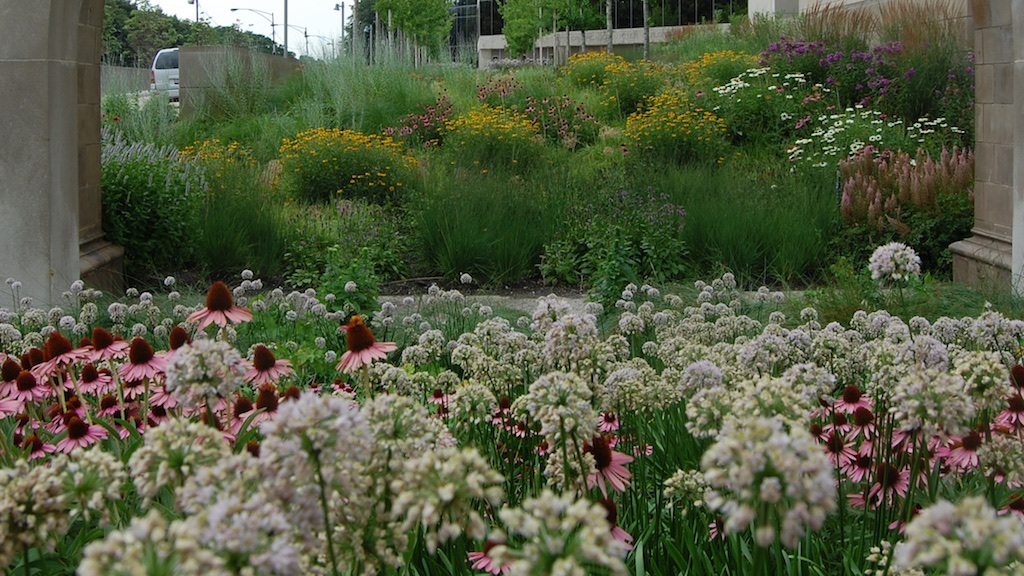
In Roy’s mind, there’s a fine line between the gardener and the artist. It takes some work but the reward of gardening is the ability to step through to the other side:
“Do you want to be the labourer? What you want to be is the artist of the garden, the creator, to be the guide to all these plants, so that when you lay them out, those plants come yelling up with energy, with enthusiasm, “Look at me, look at us, look at the community you’ve developed and designed, that we can live in healthily and happily. And this style of planting is what I pursue.”
Going deeper
One good thing often leads to another. On his visit to Canada, Roy kindly invited me down in late April to take part as a volunteer in the next phase of planting for the Piet Oudolf-designed meadow garden at the Delaware Botanical Garden.
For me, it’s a singular opportunity to observe and participate in the entire process of planting out a major-scale New Perennial public garden with an astounding 22,000 plants to get into the ground: precious knowledge I can take into the future.
I’m fortunate to know Greg Tepper, the DBG’s Director and designer Barbara Katz who are overseeing the entire project, and at least a few of the enthused volunteers who’ll be streaming in from all over the north-east.
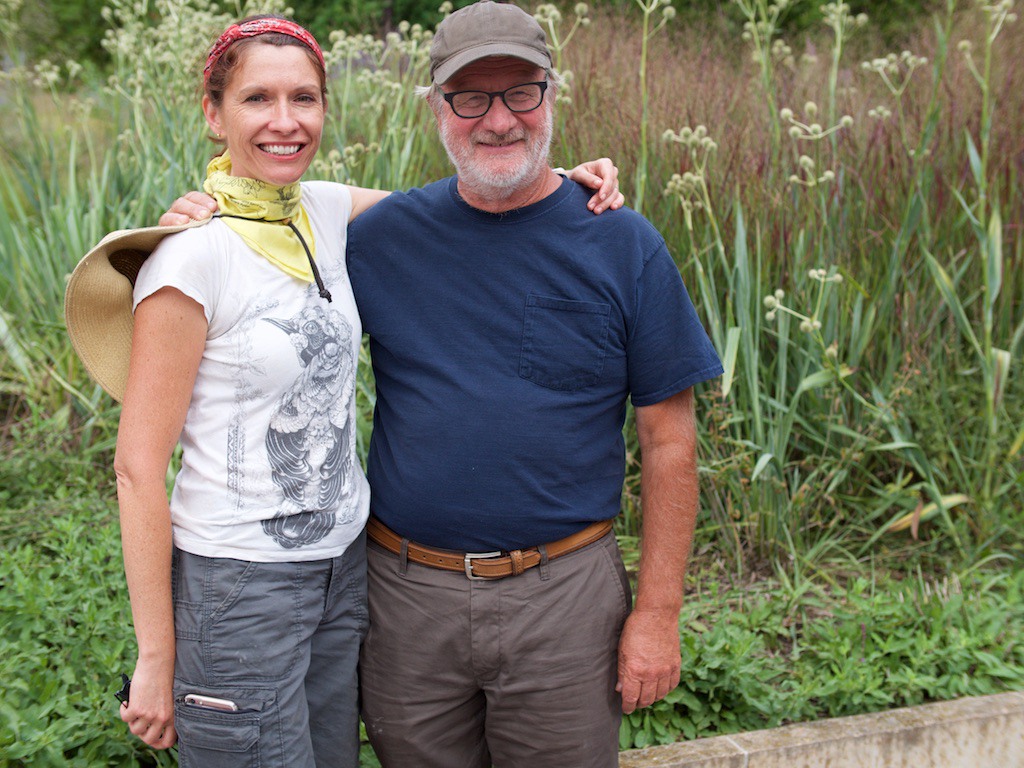
I’ll post our progress on Facebook and Instagram and no doubt, write about it here. Piet Oudolf himself is scheduled to show up on the last day of planting to review the plantings with Roy and make fine field adjustments.
Roy will also be posting his thoughts about perennial design and the world as he finds it. You can follow his journey starting this May on Instagram.
Diversity is the key
Let me leave the last word to Roy, talking about diversity, its place in the garden and beyond. No matter what side of the fence you’re on, there’s a note of truth in his message:
It’s not all about native plants – just like it’s not about native Americans moving back into our culture and us all going back to our homelands. It’s native and non-native plants living together and you plant everything based on your goals and objectives.
“If you want migratory birds, then you need to have insect populations, and then you need to have food sources for the insects. That means you need to have plants in bloom, that means you need plants with hollow stems, that means you need soil conditions with certain temperatures and certain moisture conditions and you have to get rid of the excess moisture by vegetation and flowering.
It’s not just having a few plants that that are good for pollinators, it’s having a set of circumstances and conditions. The key is not whether it’s native or non-native; the key is diversity of plants with something in bloom from April to October, and having hollow stems for insects to have homes to build, to have soil temperatures that are moderate for native bees to build homes in the soil, and it can all happen with one simple thing: just diversity. Just like all of you in your lives, everything you love comes because you have so many choices – where you can live, what you can wear, what you can do, you’re free to have all these choices.”
Diversity, that’s what brings you health and happiness.
Amen. Roy. Amen.
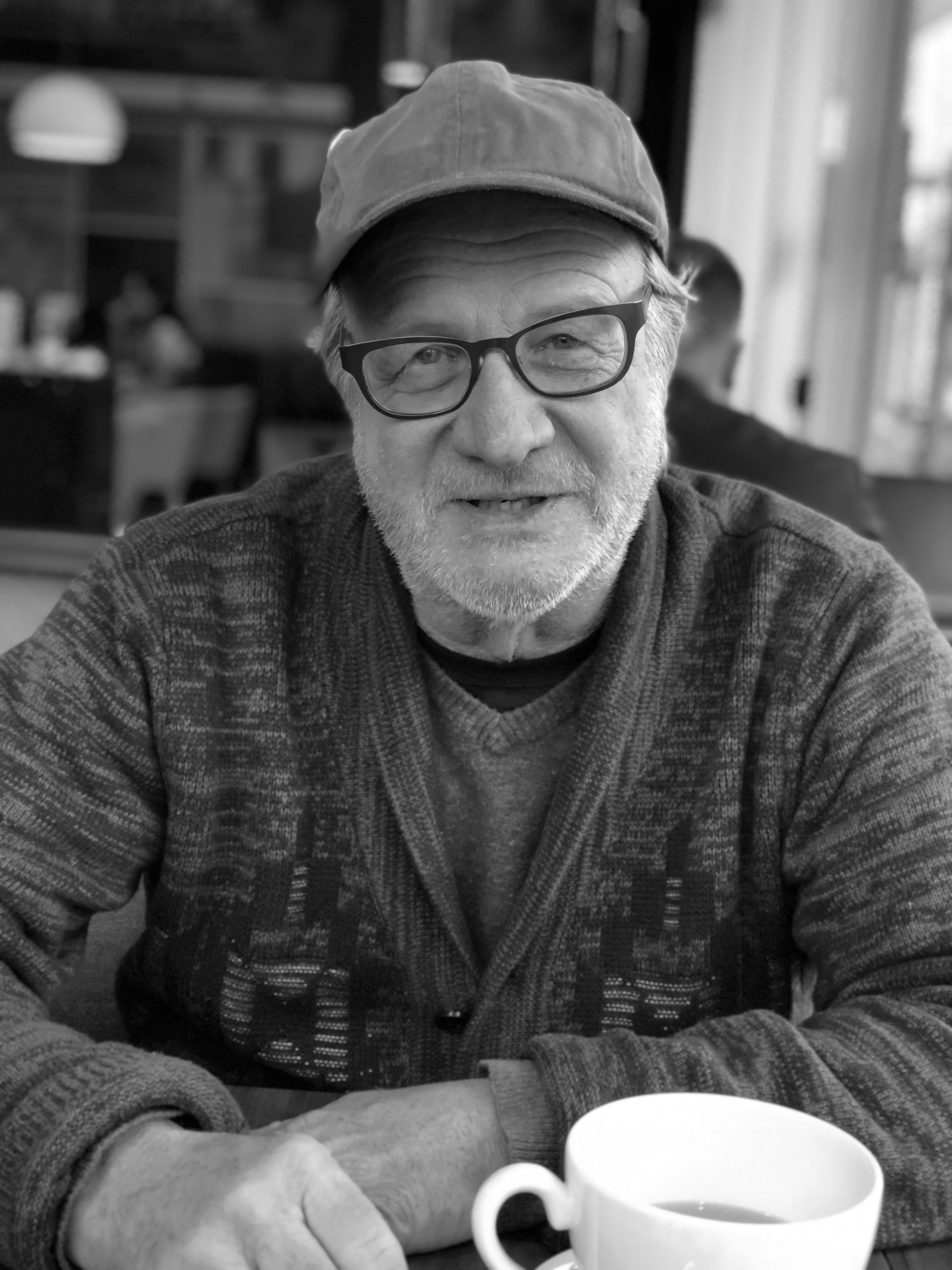
Thank you Tony for your write up about Roy! Very on point!
My pleasure, Hanna. Roy is the voice of reason on so many levels.
I am beyond excited to be able to be part of building such a beautiful sense of place with these defining paradigms of plant communities and diversity. The talent that will descend on our garden and work with our local supporters is truly an inspiration to everyone that is helping to build this garden.
Fantastic, Janet. I look forward to getting into the Delaware groove!
Lovely. I scrawled down Roy’s messages on a piece of paper at his last presentation. (As I scrawled them down the last time I heard him). They are always worth repeating. Tao indeed.
We’re on the same page. These days, I make a habit of recording folks like Roy and getting a repeat performance so the message sinks in even deeper.
I was at his presentation and loved every minute of it. My whole life I have practiced his wisdom and I have found a soulmate in the treatment of the this beautiful earth.
Wonderful way to put it. Soulmates for life!
Love this ethos of planting. Attempting it in the SW of England in our garden in the hope of increasing biodiversity amidst the green desert of agriculture surrounding us. Only wish these type of talks occurred this side of the pond.
Good to hear from you Guy… perhaps the upcoming symposium on ecological design at Beth Chatto’s in late August will be looking at these issues. Worth checking out.
Hi Tony. Thanks for that link. It is on my Radar. Just need to find the time and the funds to get to it.
Hi Tony. Great post and so glad to see Roy being celebrated. Really enjoyed this!
Thomas Rainer
Kind words much appreciated, Thomas. After spending a few days with Roy, this blog post pretty much wrote itself with much verbatim from the man himself: A genuine national treasure.
I have been a member of Roy’s fan-club for years too. You encapsulated his message as well as his endearing and inspiring personality perfectly. Meanwhile, I am thoroughly enjoying this whole website. Thank you!